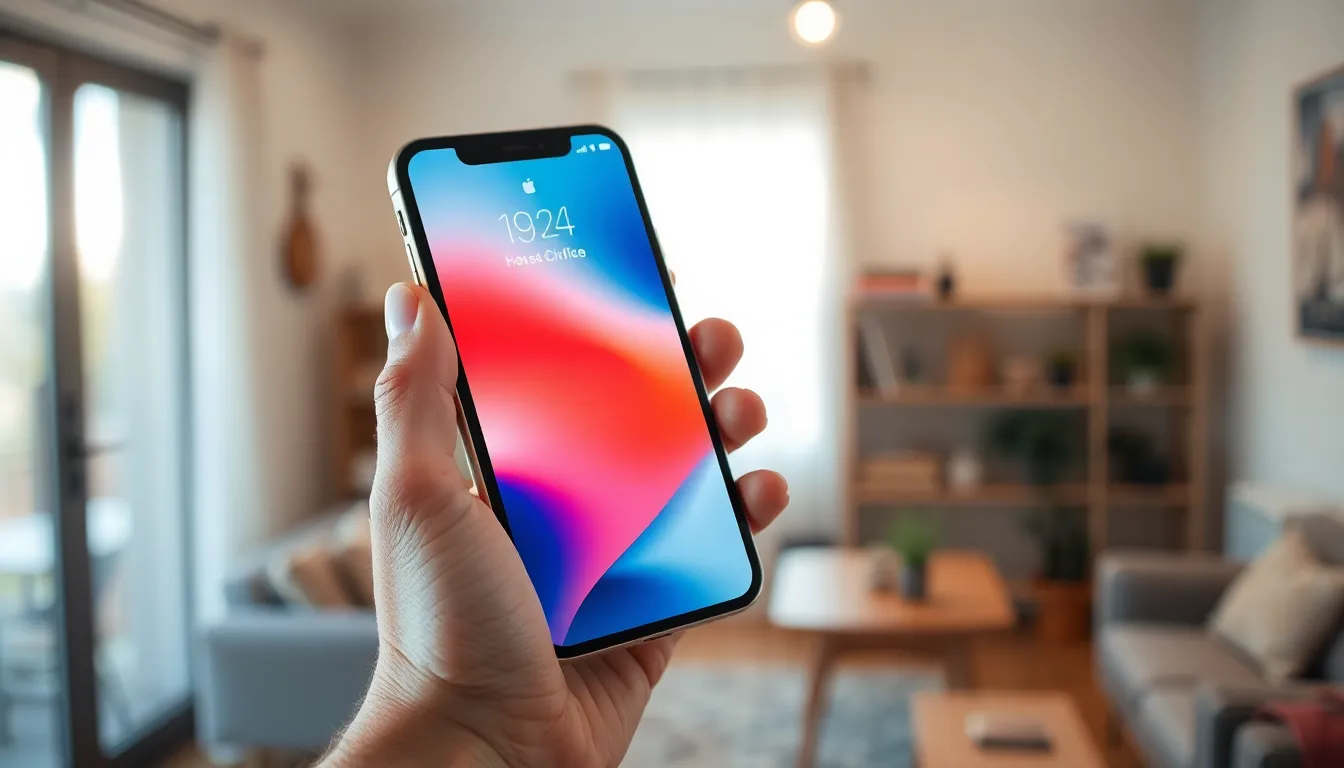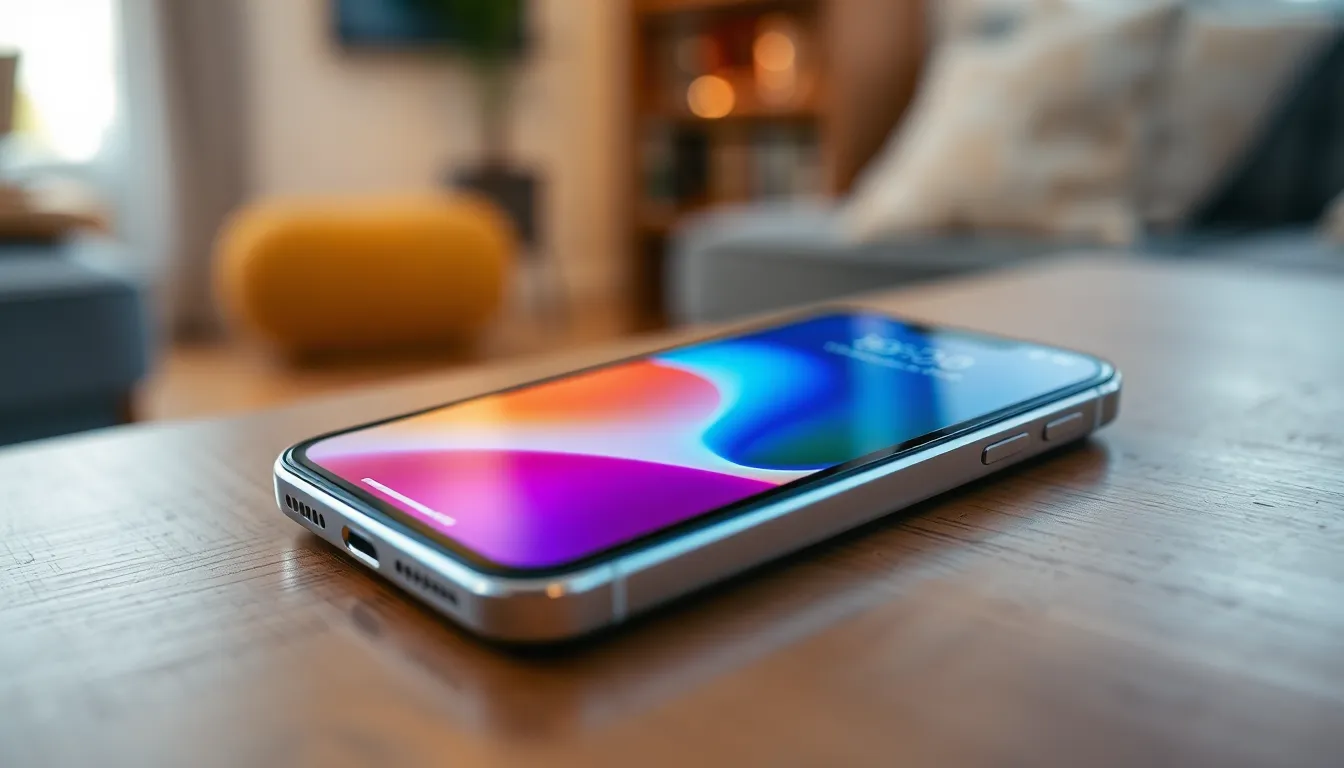Ever heard that satisfying lock sound on your iPhone and wondered what it actually means? It’s not just a sweet symphony for your ears; it’s your device’s way of telling you, “Hey, I’m secure!” But what happens behind that charming little chime?
Table of Contents
ToggleOverview of Lock Sounds on iPhone
Lock sounds on an iPhone create a unique auditory cue when securing the device, reflecting its functionality and security features. These sounds further enhance the user experience by providing feedback.
Types of Lock Sounds
iPhones feature distinct lock sounds, including the default locking sound and user-customizable options. The default sound produces a subtle yet satisfying tone. Alternatively, users can change it in settings, allowing for personalized experiences. Variations may include different tones that align with the user’s preferences or themes.
Significance of Lock Sounds
Lock sounds serve important purposes beyond mere notification. They confirm successful locking actions, ensuring users feel secure about their device’s state. These audio cues also enhance usability, offering comfort and reassurance. Additionally, they contribute to the iPhone’s brand identity, reinforcing Apple’s focus on design and functionality.
Understanding the Lock Sound

The lock sound on an iPhone serves as an auditory confirmation that the device has secured. This notification audio not only reassures users but also strengthens the iPhone’s brand identity.
What Does the Lock Sound Indicate?
The lock sound indicates successful activation of the device’s lock feature. It reassures users that their personal information remains protected. Following the locking action, the sound reinforces a sense of security and user control. Users instantly recognize this notification, confirming the iPhone’s response to their action. Enhanced user experience occurs as auditory feedback signals the completion of the task.
Default Lock Sound Settings
Default lock sound settings provide a consistent experience across iPhones. Users hear a distinct sound when they lock their device, cultivating familiarity. Customization, however, allows for personal preferences, letting users choose different sounds that fit their style. Adjustments can be made in the settings menu, catering to unique tastes. This variety enhances the overall user interaction and connection with the device. Users find it easy to explore and select alternatives to the standard lock audio.
How to Change Lock Sounds
Changing lock sounds on an iPhone enhances the personal touch of the device. Users can easily customize their experience.
Step-by-Step Guide to Change Lock Sounds
- Open the Settings app on the iPhone.
- Navigate to the Sounds & Haptics section.
- Scroll to the Lock Sound option.
- Toggle the switch to enable or disable the lock sound.
- Exit the settings to save changes.
These steps allow effortless adjustments to lock sound preferences.
Customizing Lock Sounds
Customizing lock sounds involves selecting from available options. Users can personalize their lock sound to match their style.
- Open the Settings app.
- Go to Sounds & Haptics.
- Locate Ringer and Alerts.
- Tap Tone Store for additional sound options.
- Purchase or download preferred sounds.
This process lets users select unique sounds, enhancing their iPhone experience.
Troubleshooting Lock Sound Issues
Lock sound issues on an iPhone can frustrate users, but several simple solutions often resolve these problems.
Common Problems and Solutions
Volume settings affect the lock sound; users should first check the volume level. If the lock sound is muted, accessing the Settings app and adjusting the volume slider can restore the tone. Notifications may also interfere; ensuring Do Not Disturb mode is turned off often resolves such conflicts. Additionally, the lock sound may not play due to software glitches. Restarting the iPhone frequently fixes minor software issues, restoring functionality. If the problem persists, users can reset all settings. This action restores default settings without deleting data, often solving persistent sound problems.
When to Seek Professional Help
If none of the above solutions rectify the issue, it might be time to seek professional help. Persistent problems with the lock sound could indicate underlying hardware issues. A technician may need to diagnose potential speaker malfunctions or software corruption. Users should also consider checking warranty status before visiting an Apple Store or authorized service provider. If the device experienced liquid damage, immediate professional assessment is advisable to prevent further damage. Continuous sound issues may warrant a thorough inspection from a qualified expert to ensure proper functionality.
The lock sound on an iPhone is more than just a pleasant auditory cue; it represents a commitment to user security and personalization. By allowing users to customize their lock sounds, Apple enhances the overall experience and connection users have with their devices. Understanding the significance of this feature can lead to a greater appreciation for the thoughtful design that goes into every aspect of the iPhone. Whether it’s a simple confirmation of security or a unique sound that reflects personal style, the lock sound plays a vital role in how users interact with their technology.



